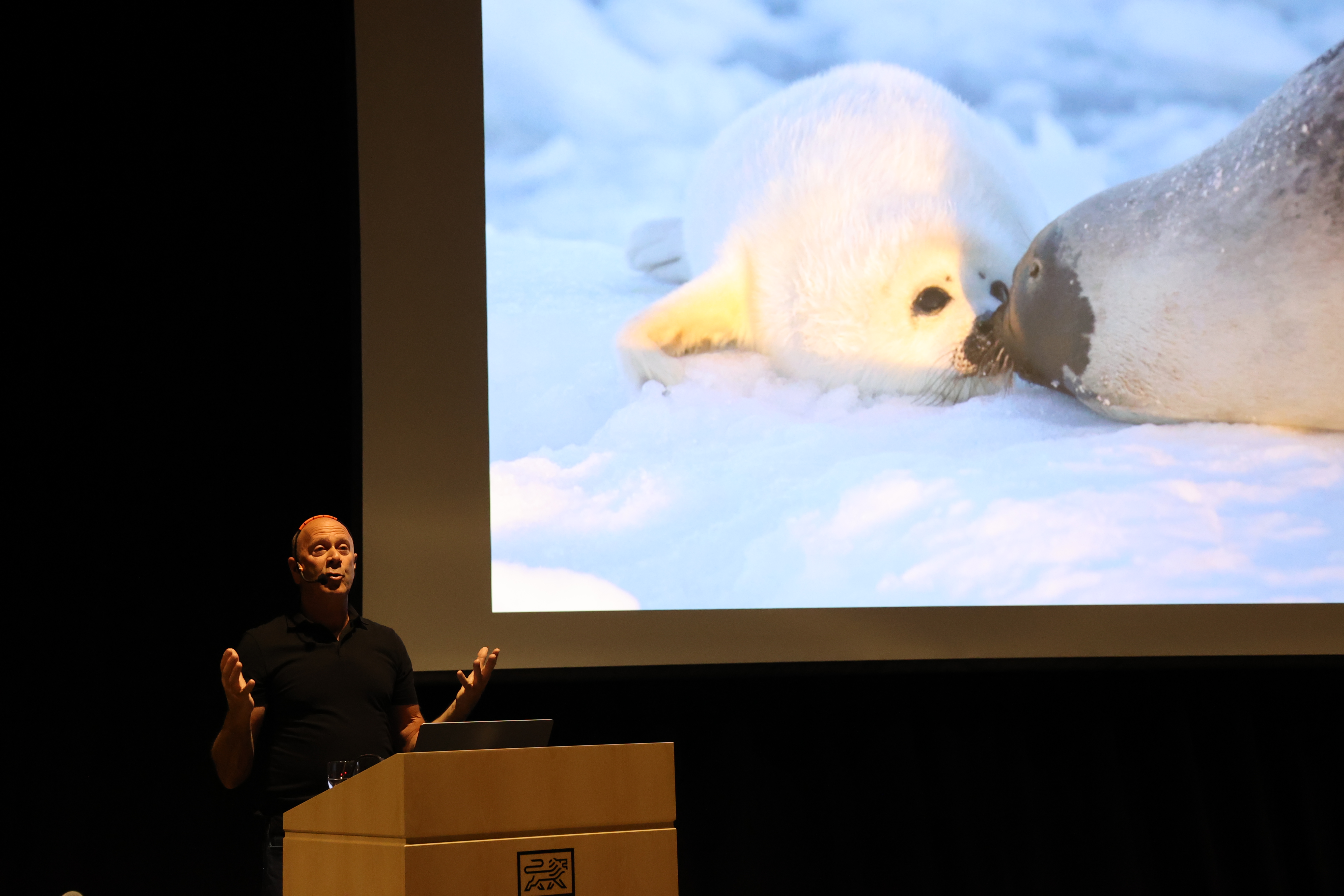Marine Photographer Mario Cyr Visits St. Lawrence
On Tuesday, January 30th, celebrated marine photographer Mario Cyr visited St. Lawrence to give a lunchtime presentation to students and staff. Cyr’s visits to schools and colleges have become rarer in recent months as his number of international speaking engagements has grown, so St. Lawrence was very fortunate to hear from this successful Quebecois professional about his fascinating and unconventional career path.
Cyr opened his presentation by speaking about his childhood in the Magdalen Islands, and how he received his first ever scuba mask as a present from his parents. 48 years later, he’s managed to turn diving into his career, but it wasn’t so simple. When he was a young adult, he worked year-round as a commercial diver, and gradually got used to spending long periods of time in cold water, a skill that would prove invaluable in his later work in the Arctic and Antarctic. A chance experience filling in for a Discovery Channel cameraman who was unused to the cold led Cyr to change directions, putting photography first. Seven years passed between the day he made his first business card and when he was able to find success as a marine photographer. Now, he is one of only a dozen people in the world who work as photographers in frigid arctic waters, and this specialization has made him a sought-after contributor to ocean-focused documentary work for all manner of production companies.
In between explaining his backstory and career, Cyr shared fascinating details about the technicalities of his job, from the different methods of filming underwater, to ways of communicating with the surface, to how to stay warm in cold climes.
The highlight of the presentation was Cyr’s discussion of various animals he has had the chance to work with. Each individual has a personality, like you or me, he said. He photographs only the friendly animals; trying to get unfriendly marine mammals to cooperate is never worth it. Cyr taught the audience about the behaviour and feeding habits of seals, walruses, polar bears, narwhals, bowhead whales, and orcas. Each story was paired with photos and video of the animals in action and a mention of the difficulties involved in getting the shots. Diving with walruses was thought to be dangerous or impossible before Cyr managed it (with the help of a shark cage). He was also the first to photograph polar bears from the water, something that even he was nearly too scared to try.
Cyr closed the presentation with a discussion of global warming’s negative impact on ecosystems, in the arctic circle and elsewhere. The food chain in the arctic is dependent on the biodiversity in the flow edge, he said, and with warming water temperatures, the systems are breaking down. Similarly, waters approaching 30 degrees Celsius are killing coral in warmer parts of the planet. Meanwhile, plastic pollution has caused a dramatic drop in turtle populations, and a corresponding increase in the number of jellyfish. Presenters like Cyr can bring these far-off places to life and, one hopes, move young people to take action.
We hope that this inspiring presentation showed students that anything is possible, and that it is important to follow your passions. It took years for Cyr to go from young scuba diver to accomplished marine photographer, but the love of the job made it all worth it. Thank you to Mario Cyr for a great presentation and to Nancie Moreau for coordinating this event, which was a hit with students and staff alike.
You can learn more about Cyr and see some of his striking images by visiting his website: https://www.plongeealpha.com/

Mario Cyr teaches the audience about the developmental stages of baby seals.

